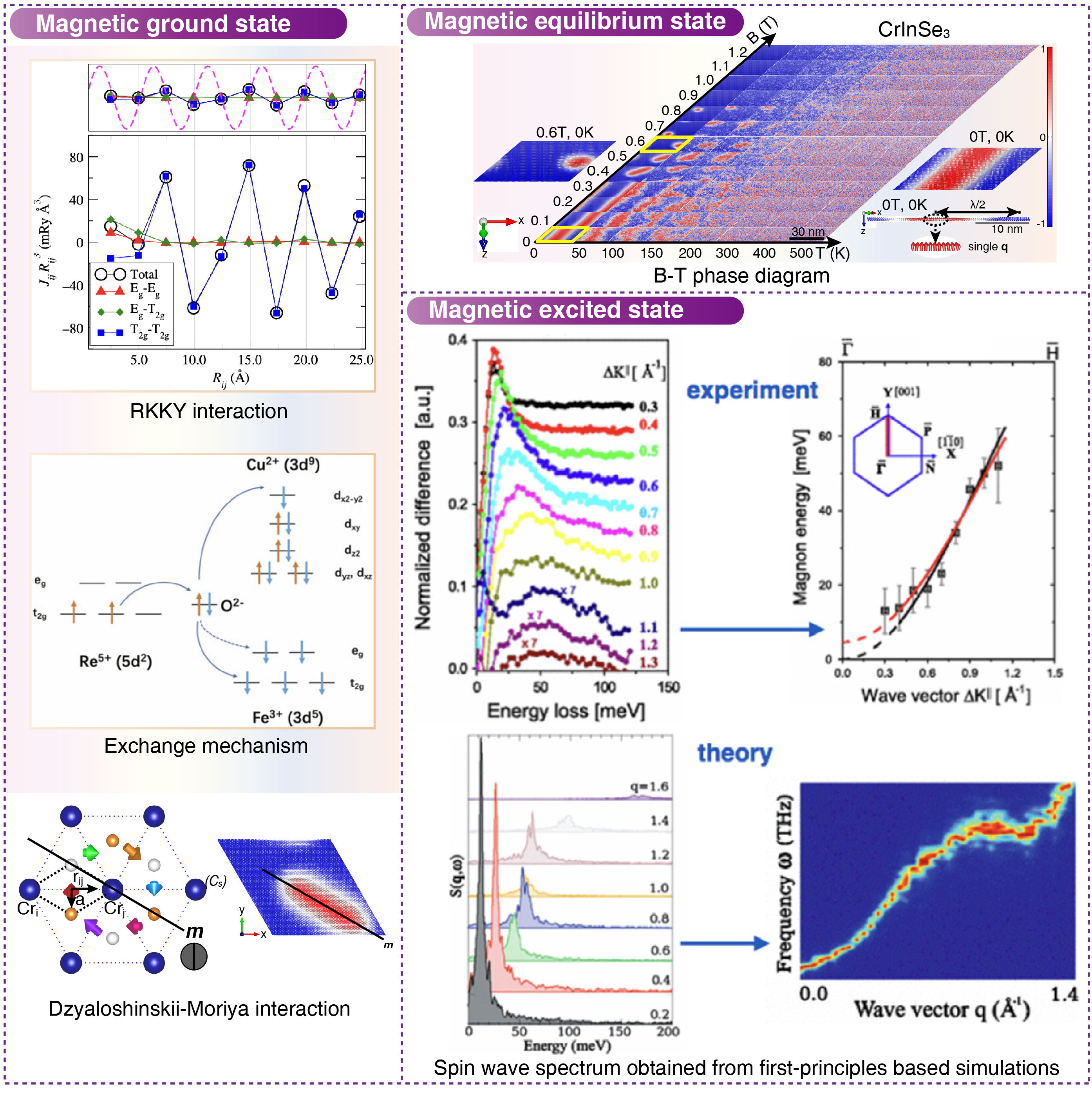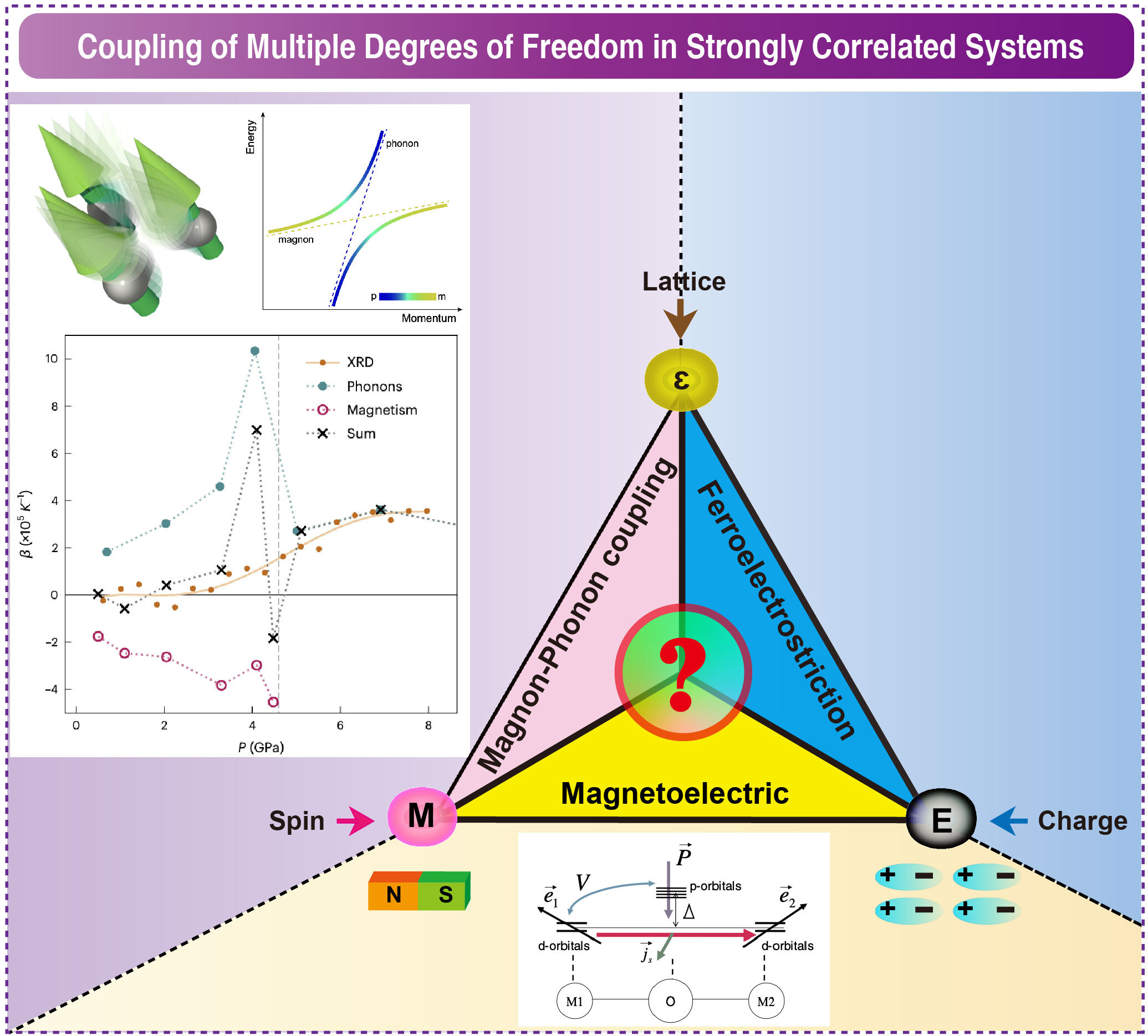Research
A growing collection of our cool projects.

1. Unraveling Exotic Magnetic Properties in Complex Transition Metal Compounds
Our research focuses on the theoretical exploration of magnetic properties, spanning from the ground state and equilibrium state to excited states. We aim to provide an accurate and predictive framework for understanding complex magnetic interactions and dynamic behaviors in strongly correlated systems.
A key aspect of our work involves analyzing magnetic exchange mechanisms—including direct exchange, superexchange, double exchange, Dzyaloshinskii-Moriya (DM) interaction, and RKKY interaction—all of which are well known to be dictated by the specific geometry, possible exchange routes, and the orbital structure within a given compound. This analysis is performed using the state-of-the-art LKAG approach. We also investigate complex magnetic configurations, such as spin spirals and skyrmions, and examine their responses to external perturbations, including temperature, magnetic field, and pressure, with the help of effective spin Hamiltonians.
Additionally, we conduct spin dynamic simulations to study time-dependent spin-spin correlation functions, dynamic structural factors, spin-wave spectra, as well as specific excited magnetic processes induced by spin-polarized current, such as spin transfer torque (STT) and spin-orbit torque (SOT).
selected publications
- npj 2D Mater. Appl. 8, 51 (2024).
- Phys. Rev. B 104, 245410 (2021).
- Phys. Rev. Mater. 5, 054405 (2021).
- J. Phys. Chem. C 125, 18467–18473 (2021).
- Nanoscale Horiz. 9, 162–173 (2023).
other references
- Rev. Mod. Phys. 95, 035004 (2023).
- Phys. Rev. Lett. 116, 217202 (2015).
- Sci. Rep. 6, 25685 (2016).
- J. Phys. Condens. Matter. 27, 243202 (2015).
- J. Magn. Magn. Mater. 67, 65 (1987).

2. Coupling of Multiple Degrees of Freedom in Strongly Correlated Systems
In addition to spin, different degrees of freedom coexist in electrons, including charge and orbital, all of which can not only interact with each other but also couple with lattice vibrations. Effectively integrating these couplings into a single device remains a key challenge in the development of multifunctional materials, where physical properties can be manipulated by external magnetic fields, electric fields, or strain.
Our research focuses on the intriguing interplay among these degrees of freedom, including magnon-phonon coupling and magnetoelectric coupling, as well as the corresponding emerging physical phenomena, such as anomalous negative thermal expansion and unconventional superconductivity.
selected publications
- npj 2D Mater. Appl. 8, 51 (2024).
- Phys. Rev. B 109, 174115 (2024).
other references
- Phys. Rev. Lett. 99, 015901 (2007).
- Phys. Rev. B 105, 104418 (2022).
- Nat. Commun. 14, 6093 (2023).
- Nat. Phys. 19(11), 1642, (2023).

3. Development of Computational Methods and Tools
-
Develop a novel deep learning framework for materials design and property prediction.
-
Development of computational tools.
-
TBA
selected publications
- arXiv:2510.13207
other references